I just received some passenger car coach interiors from an ebay vendor. My guess is they were created with a 3D printer and are an off white. I intend to paint them. I’m wondering what colors would be appropriate. Most of the prefab interiors I’ve seen over the years are tan but I’m wondering what other colors I could consider. Did railroads have a standard color for their coach interiors or did they use a variety. I’m specifically interested in the NYC and Pennsy because these are the two railroads that run joint passenger operations over my fictional railroad. I’m probably going to spray the seats and the floors one solid color since I don’t light my interiors and the floors are going to be barely visible from most viewing angles.
I usually paint coach seats a light tan. I might use a darker color for the sides. I just brush-paint them, since they’re inside a coach with small windows and minor painting errors won’t be noticed.
I do illuminate my car interiors. I put small numbers of passengers inside, placing them next to the windows for visibility. The lighter color of the seats makes the car interior brighter.
For the most part, I choose not to light my passenger cars and don’t populate them. The reason for that is that a lot of my coaches spend a good part of the operating session parked in the coach yard and it would be a distraction to have them lighted with passengers. By not lighting them, it is less obvious that they are empty when they are in motion.
There are exceptions. I do have some cars that pass completely over the layout from one staging yard to the next so they aren’t visible when parked. I have started populating some of those. My favorite scene is my 20th Century Limited observation car with the patrons being served drinks in the rear.
“Earth-tones” are always a good choice. Tan or ivory on walls, lighter ivory or white on ceilings. Era and type of car has some influence on color choices.
After 1971 Amtrak came along and decided blue, purple and red hues were in vogue!
 NKP_105ATK_6045 by Edmund, on Flickr
NKP_105ATK_6045 by Edmund, on Flickr
 Dome_9400_2 by Edmund, on Flickr
Dome_9400_2 by Edmund, on Flickr
This tracing from the PRR may help in guiding color choices:
 PRR_P70_InteriorColors by Edmund, on Flickr
PRR_P70_InteriorColors by Edmund, on Flickr
Milwaukee Road:
 Milwaukee Road Coach 649, ex-552, Ex-Coach-Touralux 5772 "Granite Falls" Interior by J.L. Nelson, on Flickr
Milwaukee Road Coach 649, ex-552, Ex-Coach-Touralux 5772 "Granite Falls" Interior by J.L. Nelson, on Flickr
Union Pacific:
 Ex-Union Pacific Coach #5437 - Coach Interior by J.L. Nelson, on Flickr
Ex-Union Pacific Coach #5437 - Coach Interior by J.L. Nelson, on Flickr
Here’s an S-P dining car:
A heavyweight Pullman section car:
The tan is just the color of the plastic used, it’s not meant to be a “normal” or “standard” color of the seats in the real cars. In heavyweight cars, the seats were usually red or green plush. Don’t forget to paint on the white 'antimacassars", it really stands out.
I generally spray the one-piece interiors the color I want the seats to be, then brush paint the floor a different color. As you say it’s not usually that noticeable.
One other thing is rather than paint the walls, I used colored construction paper or colored 3x5 cards glued to the walls. Neater/easier than painting, and it’s something you can see thru the car windows.
I never thought of coloring the interior walls. That’s an interesting idea. The problem is the first cars I’m going to add interiors to are a couple really old Rivarossi heavyweight coaches. The roof and interior glazing are all one piece and clip to the floorboard. I think adding a paper interior might interfer with the glazing when I try to reinsert it. I bought these at an estate sale about 40 years ago and I don’t know how old they were then. Just the basic underweighted Rivarossi passenger car of that era. An underweighted empty shell with plastic trucks, plastic wheels, and truck mounted horn hook couplers. In addition to putting in the interior, I’m going to add body mounted KD 148 couplers, proper weight, and KD 33" wheels. 36" wheels would probably be more appropriate but they would rub on the brake pads of the trucks. The original plastic w
Depending on the layout of the car’s interior, you can add weight in roomettes, or washrooms, but I often put weights in the car’s clerestory, too.
I use Kadee’s 36" wheels…all you need to do is use a knife to shave-off a bit of the face of the brakeshoe - no need to remove them completely.
Most of my cars have some interior detail, but most don’t yet have passengers. I don’t bother lighting the cars, but will eventually add some riders.
Here are a few pictures of some of my Rivarossi cars…
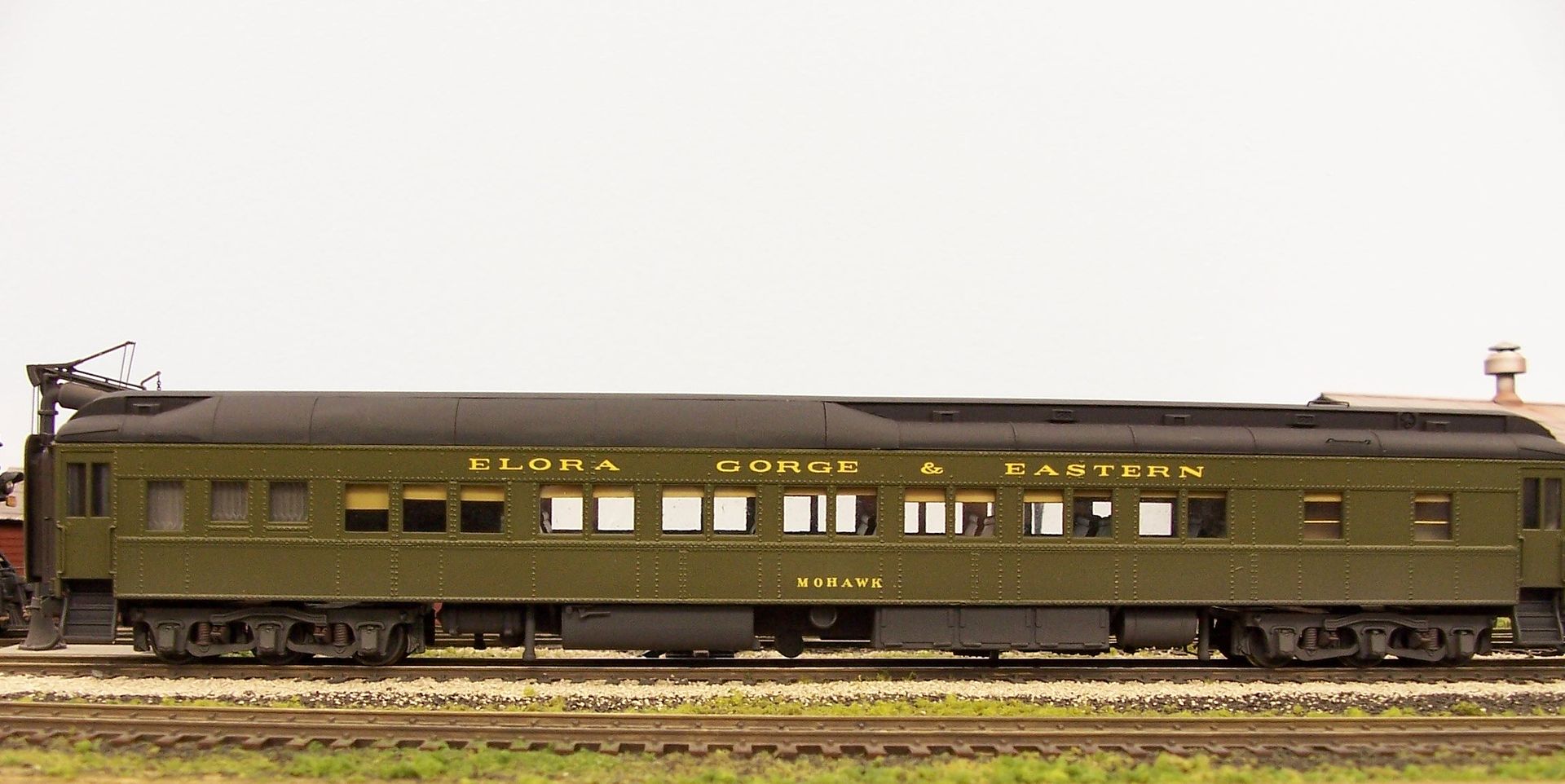
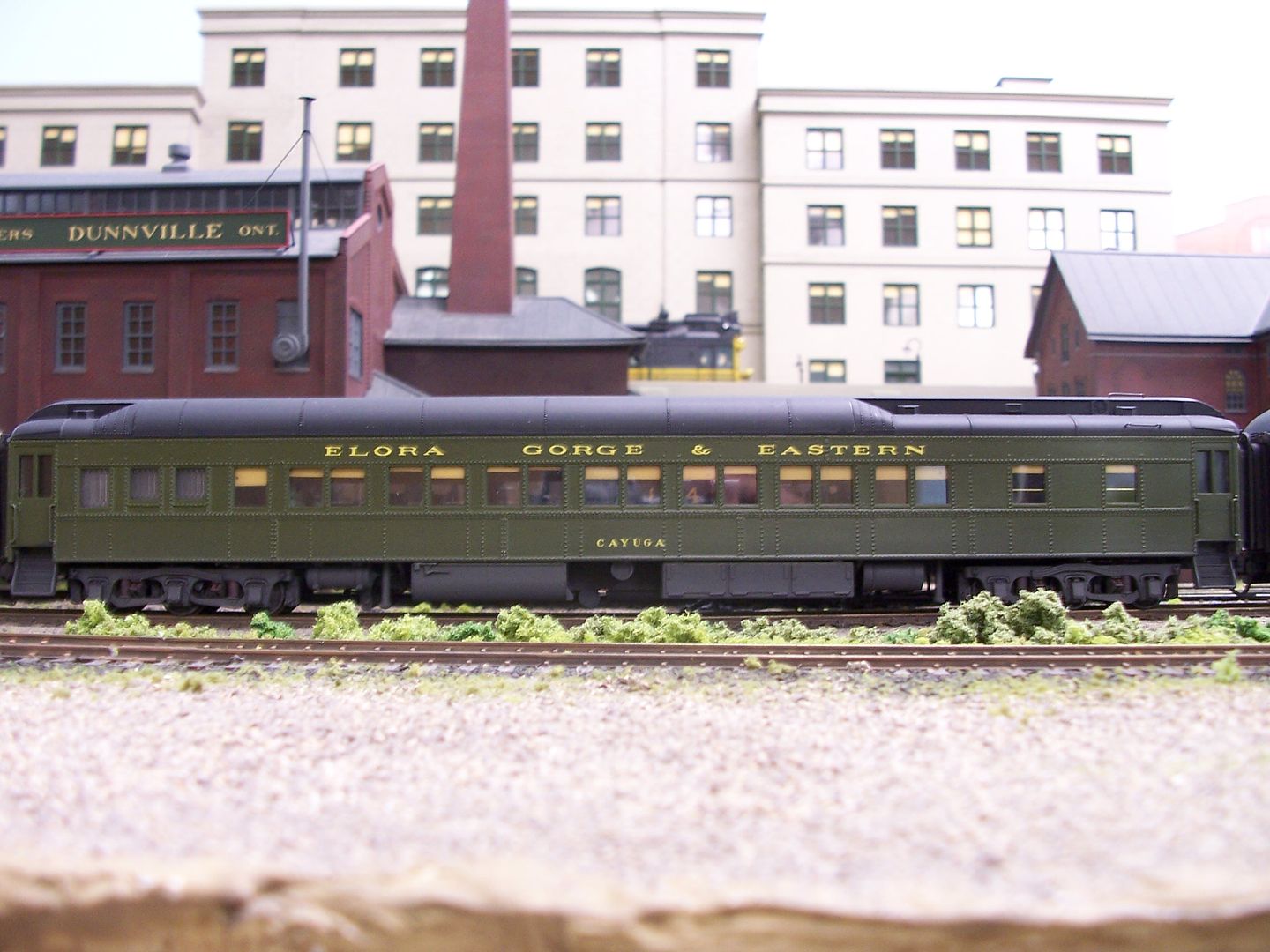
…and the car’s interior…
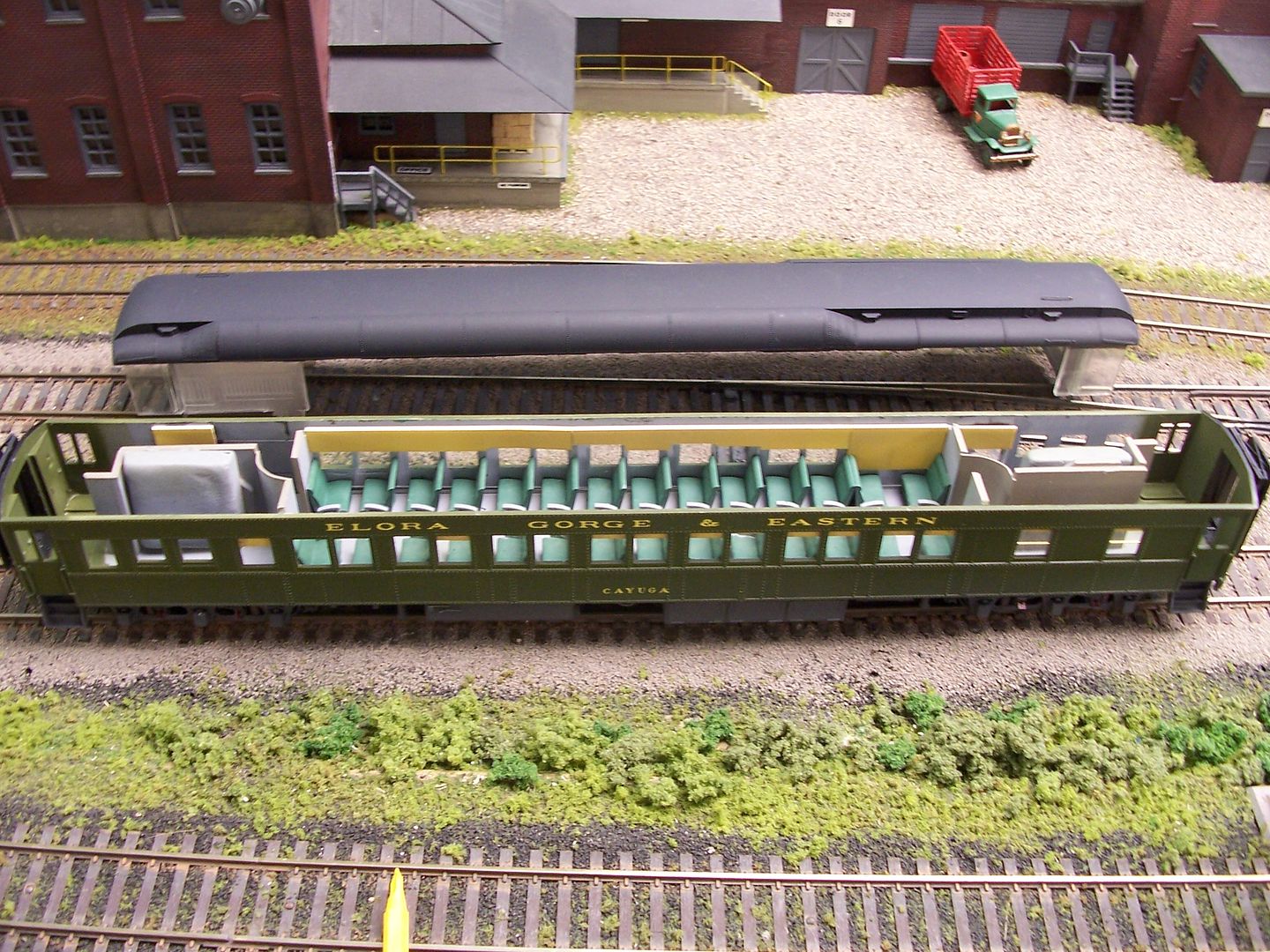
…note the custom-cast lead weights in both the Ladies and Gents washrooms. The seats are from Pikestuff, and come in a variety of colours.
This combine was originally a diner, but I cut it up a bit to make it shorter…
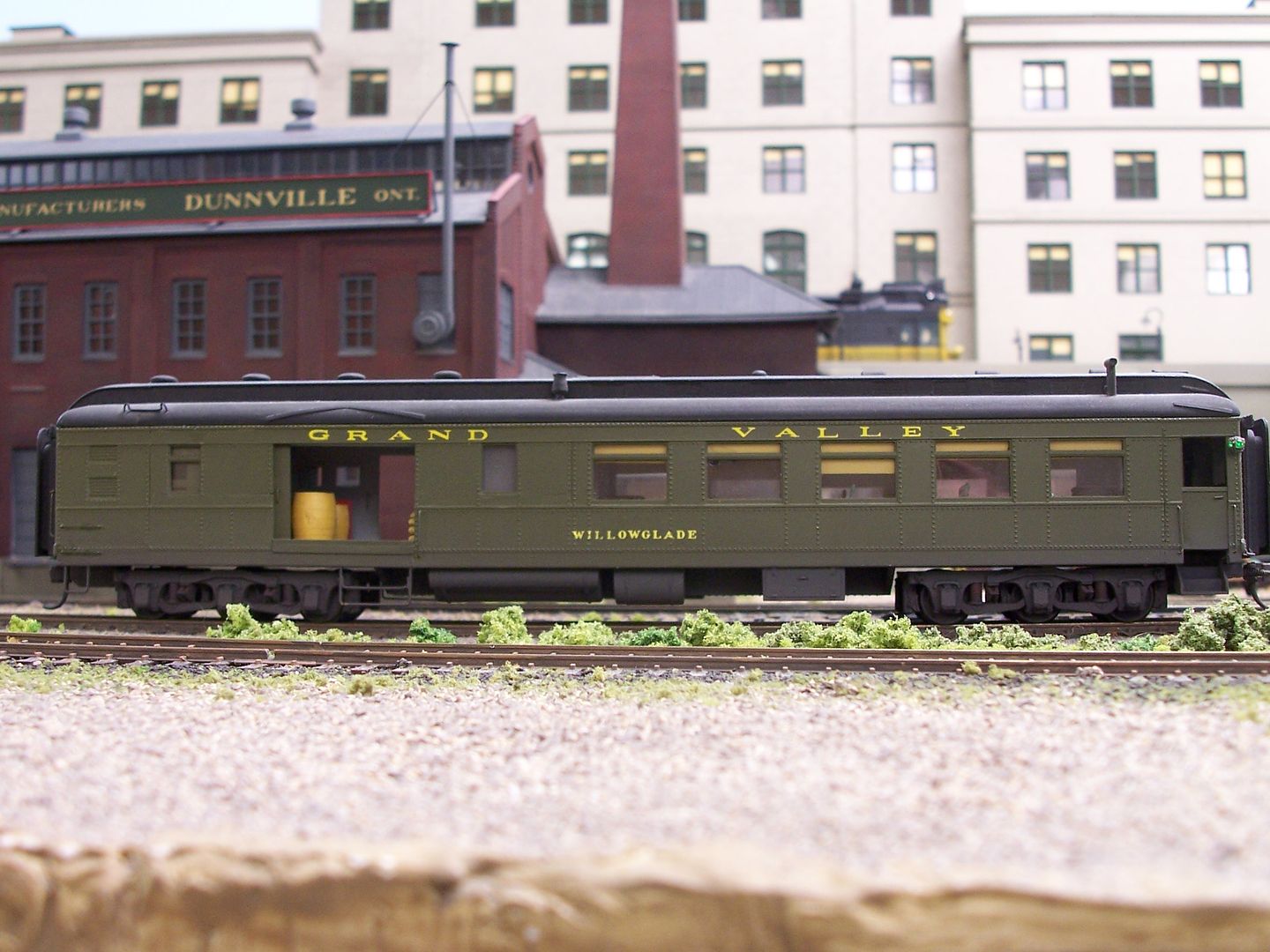
Here’s a view of the interior - note the weights in both the car and the car’s clerestory roof…
I’ve considered putting added weight under the roof but my concern is whether that would make the car top heavy and cause excessive wobble.
In the past, I have shaved the brake pads on Rivarossi trucks to get a 36" wheel to fit, but since so little of the wheel actually shows, it seems simpler to me to just use the 33" wheel.
I skimmed over the March issue regarding weathering of passnger cars. Some of the suggestions like weathering the wheels and the undercarriage made absolutely no sense to me. The wheels are barely visible and the undercarriage not at all during normal running. The highest track my passenger cars travel on is 54" off the floor. I estimate my eye level to be 68". If my undercarriages were painted pink I don’t think I would notice. These steps might be worthwhile if you are going to enter a model in a competition but for everyday running, it seems like a lot of work for little or no benefit.
PS. I’m always impressed by the work you do to upgrade basic passenger cars.
For me I just enjoy building up the interiors, very little can be seen through the windows. I do illuminate all my passenger cars. I daisy chain the lighting power on my passenger trains and control the on off by DCC function switch or a latching reed switch in the baggage car when operating in DC mode.
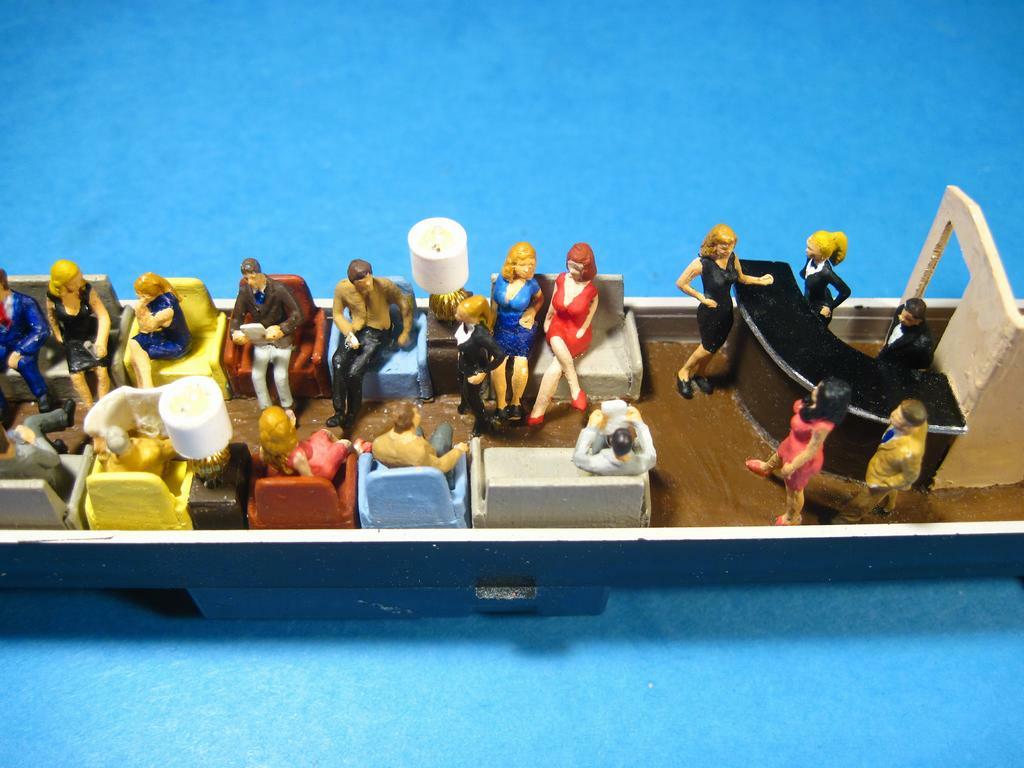
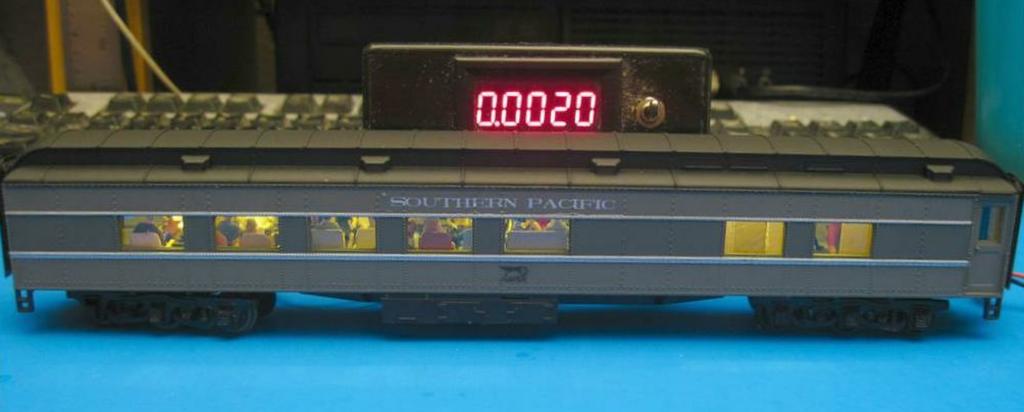
Mel

My Model Railroad
http://melvineperry.blogspot.com/
Bakersfield, California
Turned 84 in July, aging is definitely not for wimps.
Depends on the railway. Seats can be upholstered and finished in any colour really.
I’ve seen dark blue, wine-red, golden-brown, grey, etc.
This is what VIA Rail was using on the the Atlantic Limited “Tweedsmuir”, formerly a CPR domed tail-end car…
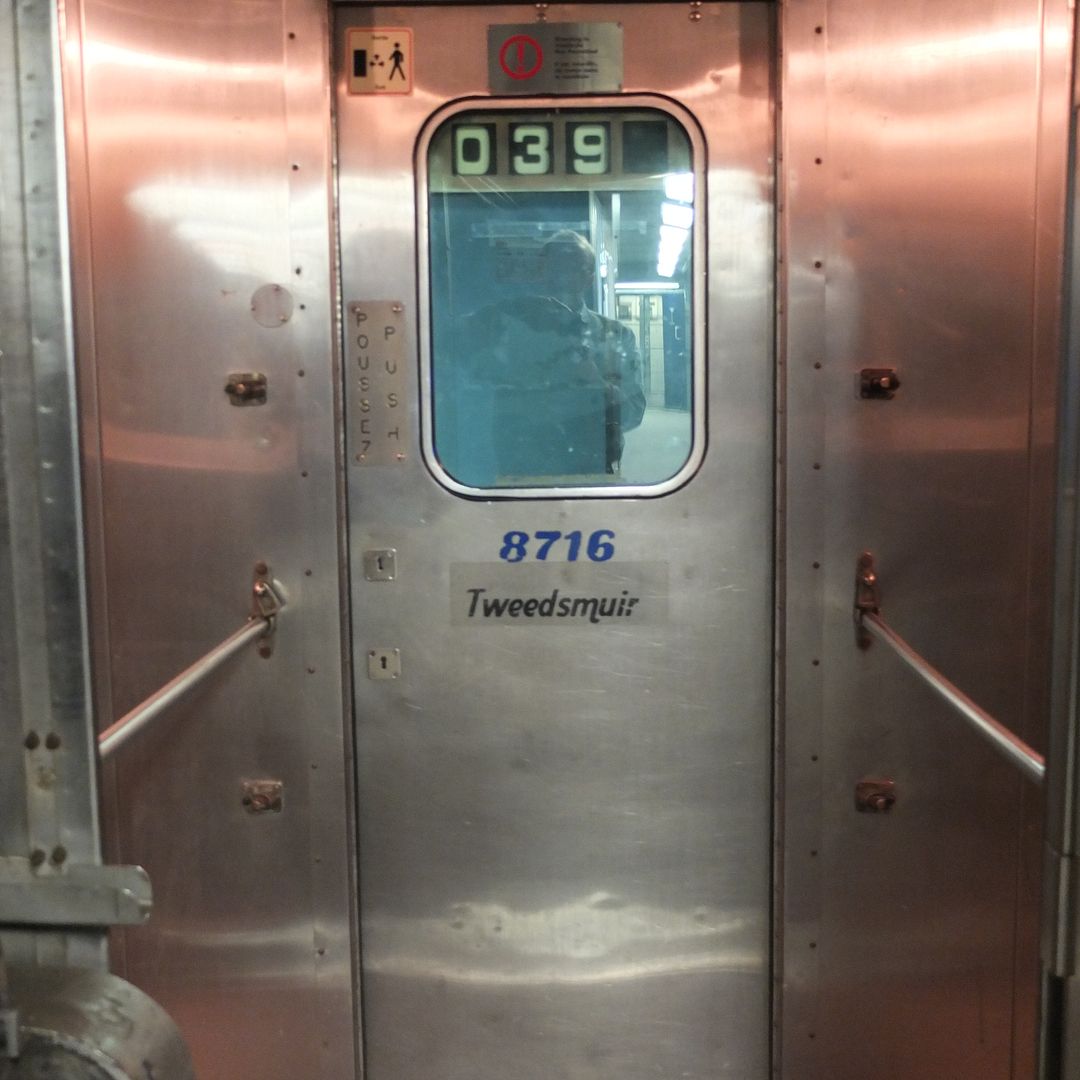
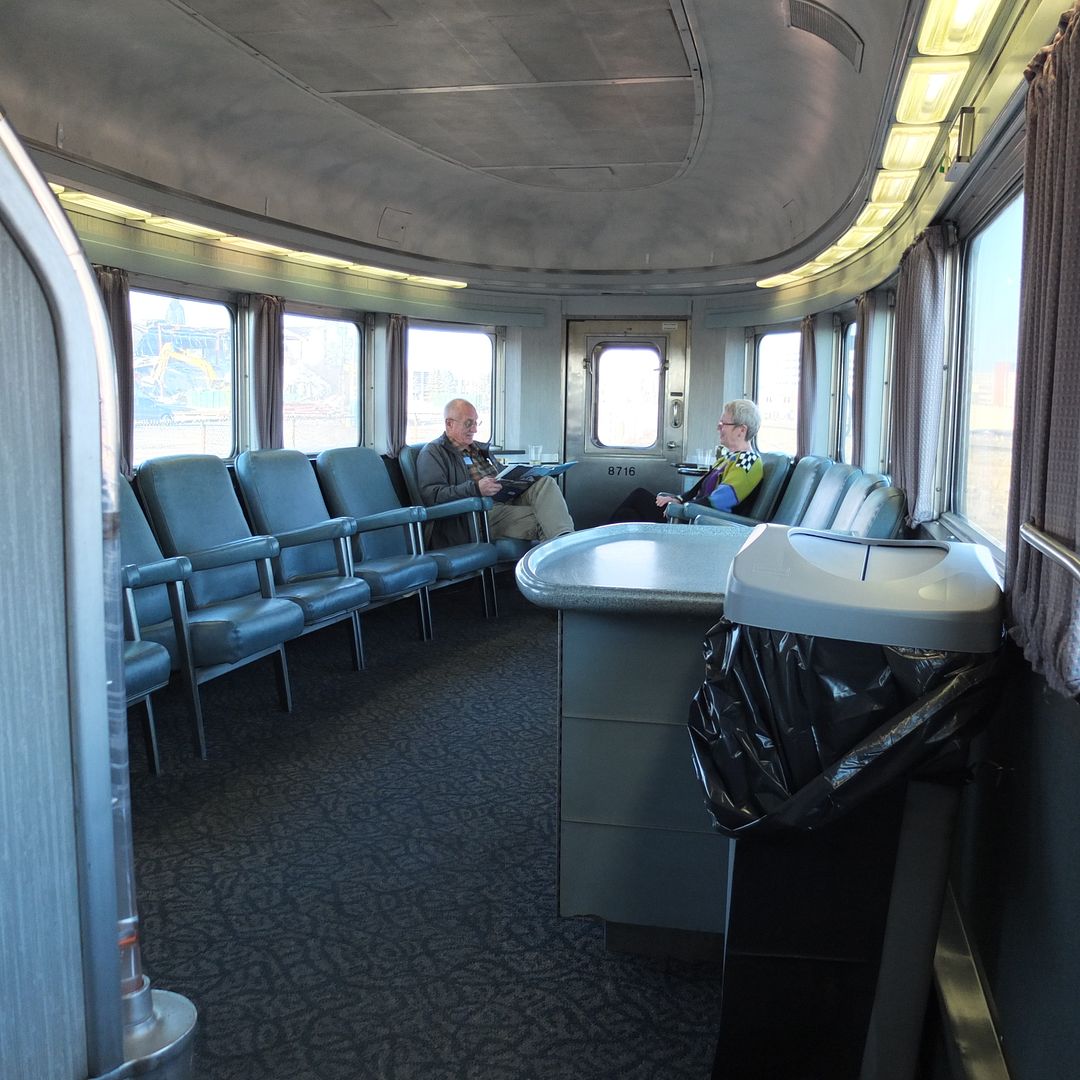
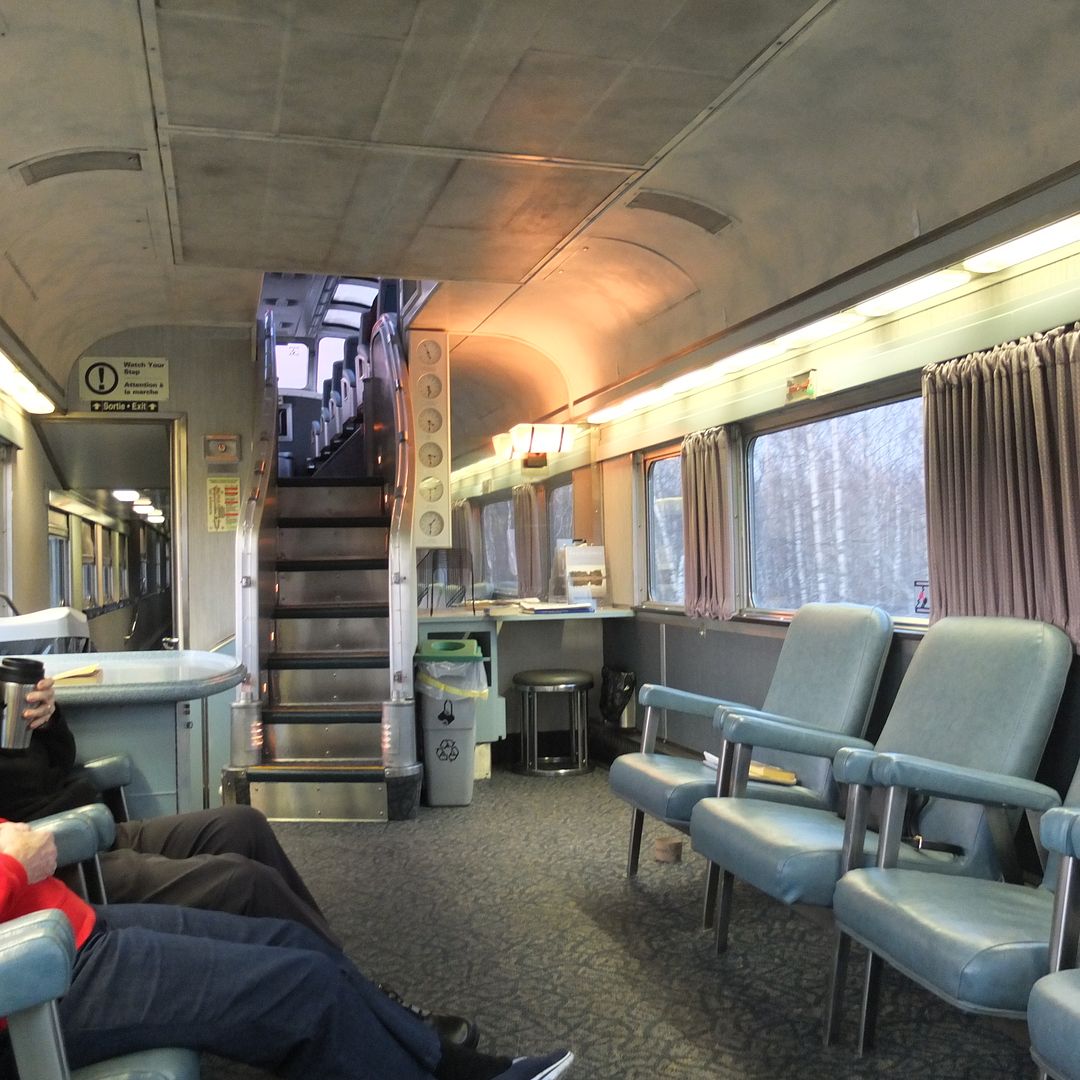
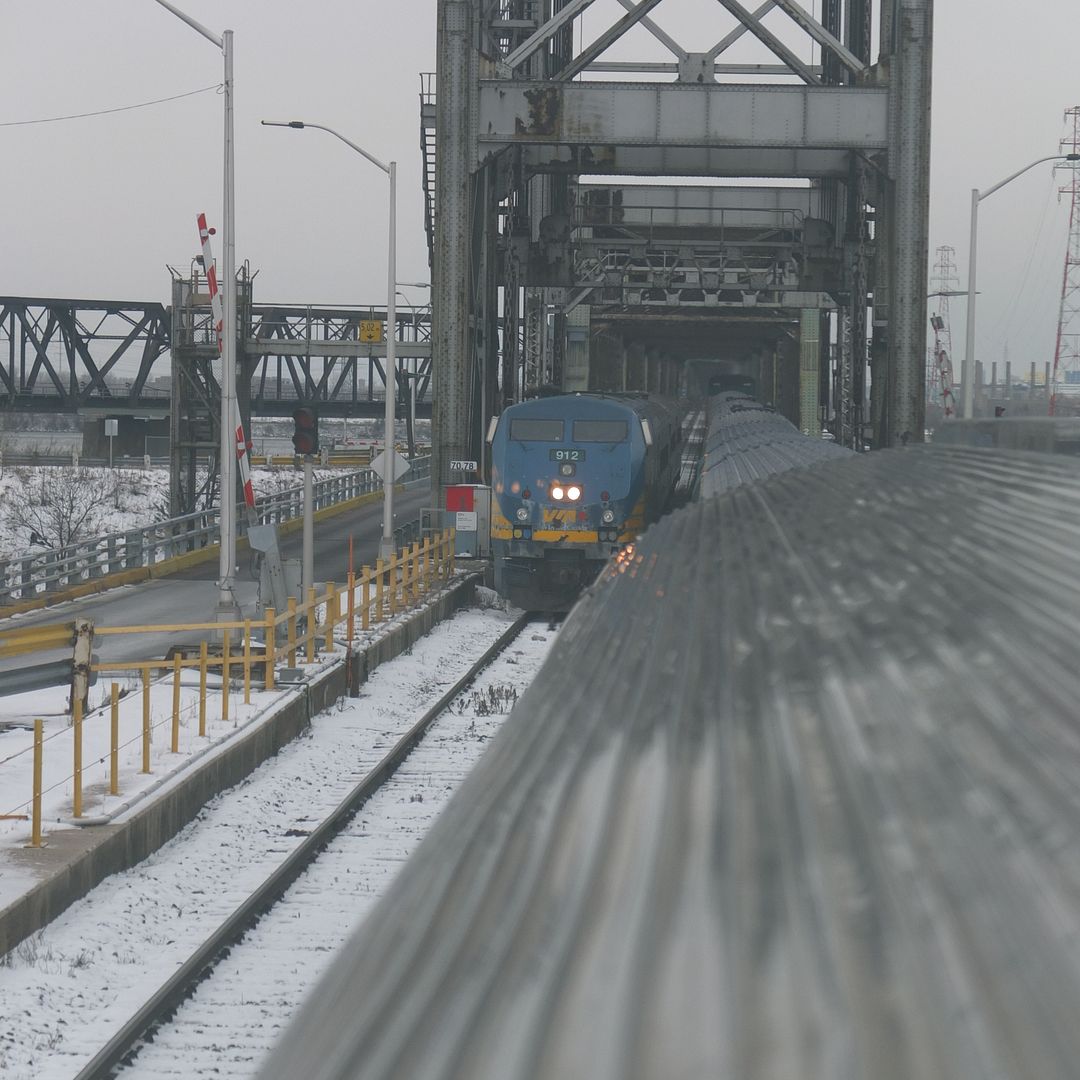
Thank you, John, your kind words are much appreciated.
Wayne
I mean, they were. And Amtrak was downright restrained compared to how some airlines were decorating the cabin.
Sorry, I meant use the cardstock to color the interior wall dividers of the one-piece interior you’re adding. For the interior walls of the car itself, after primering the entire car body I usually spray paint the inside a light color (like light green, or just leave it primer gray) then after it’s all dry I fold up a soft paper towel and put it in the car interior and insert a sprung paint handle to hold it in place. Then I spray the exterior. The soft paper towel soaks up the paint so you don’t get overspray coming thru the window openings and coloring the inside of the car.
I believe the old AHM/Rivarossi (and later IHC) cars use 31" wheels. Not sure why, perhaps that was just the size wheels that they used on their European models? Once in a while old packages of 31" replacement metal wheels show up online or at train shows, but 33" wheels work fine. Some folks shave down the brake parts so they can use 36" wheels, but once the cars on the layout I don’t know that the smaller wheels really stand out.
Did the Pennsy have a standard? Silly boy, the PRR had a standard for EVERYTHING !
Railroads had standard colors but the colors might change depending on which construction run of car and when the cars were updated.
Dark greens, maroons, reds, tans, blues, stripes, patterns were all used on passenger car seats.
That’s my thinking. With the Rivarossi trucks, you can only see the bottom edge of the wheel. Is a 33" wheel going to look different than a 36" wheel when only that much of it shows? The radius of a scale 36" wheel is only .0172 of an inch more than the radius of a scale 33" wheel. I don’t think I could tell the difference. That’s also why I couldn’t understand the article in the current MR which suggests weathering the wheels. Why? I just put the same 33" KD black wheelsets I put on my freight cars and they look just fine, what little you can see of them.
